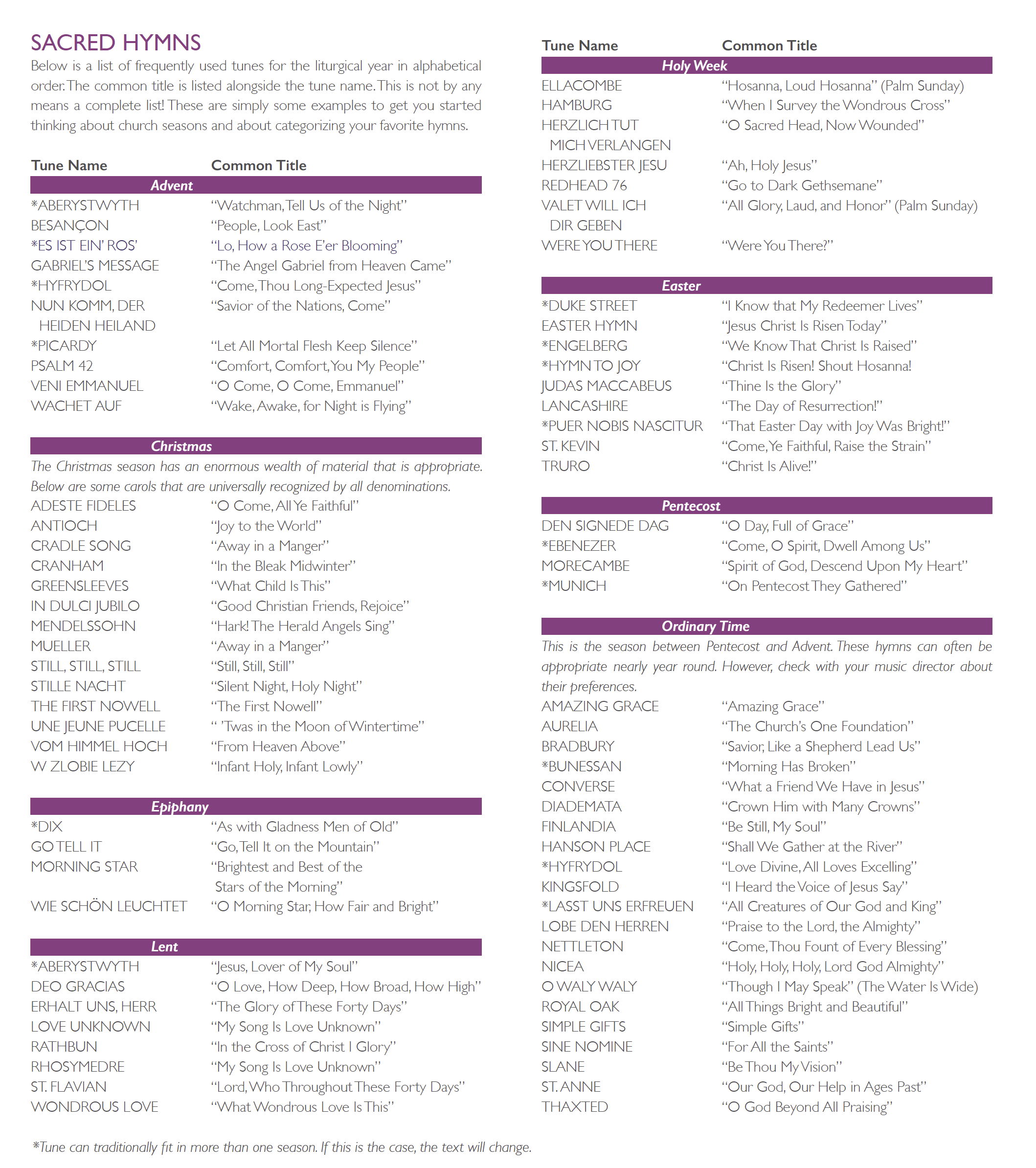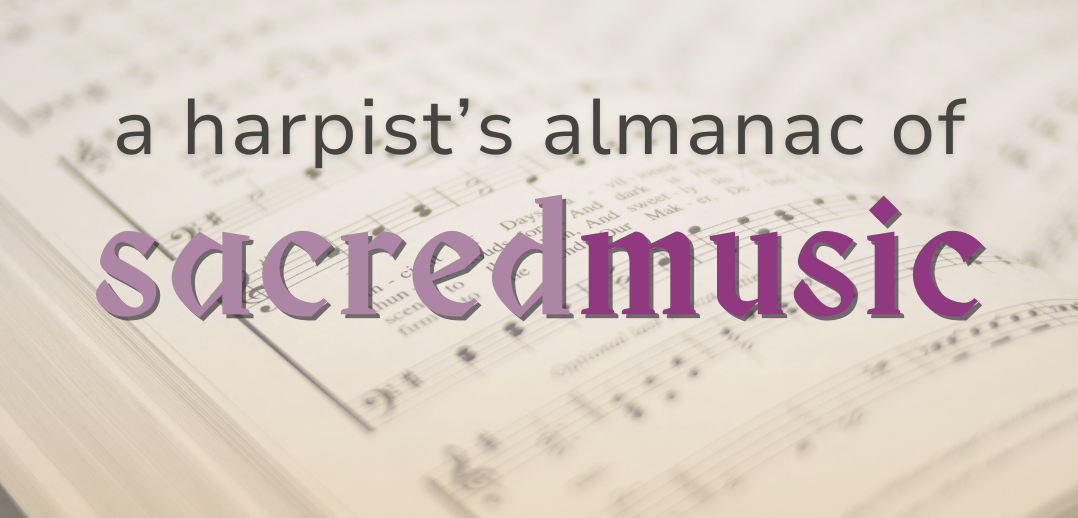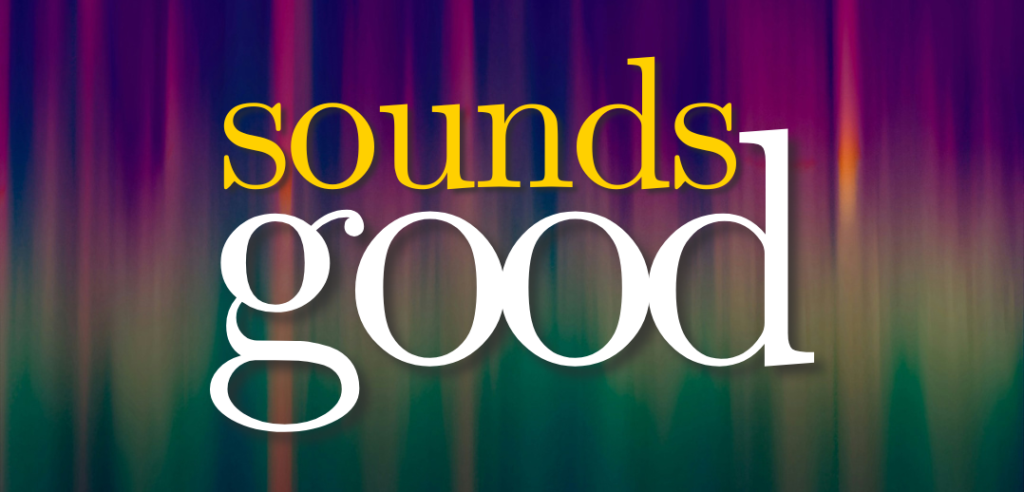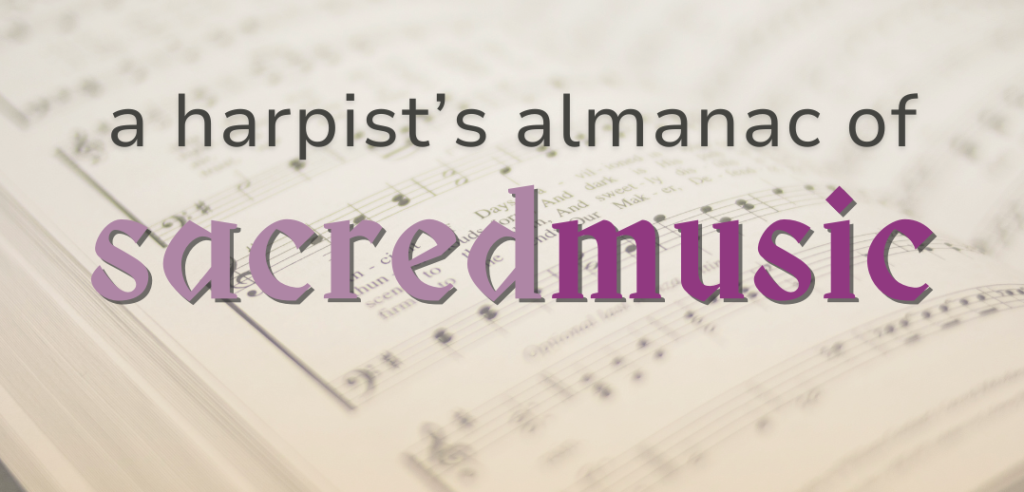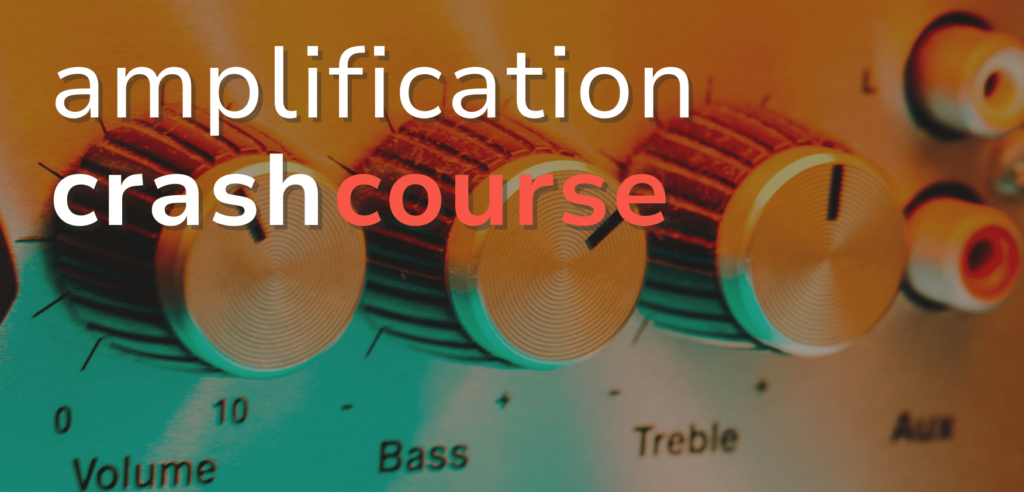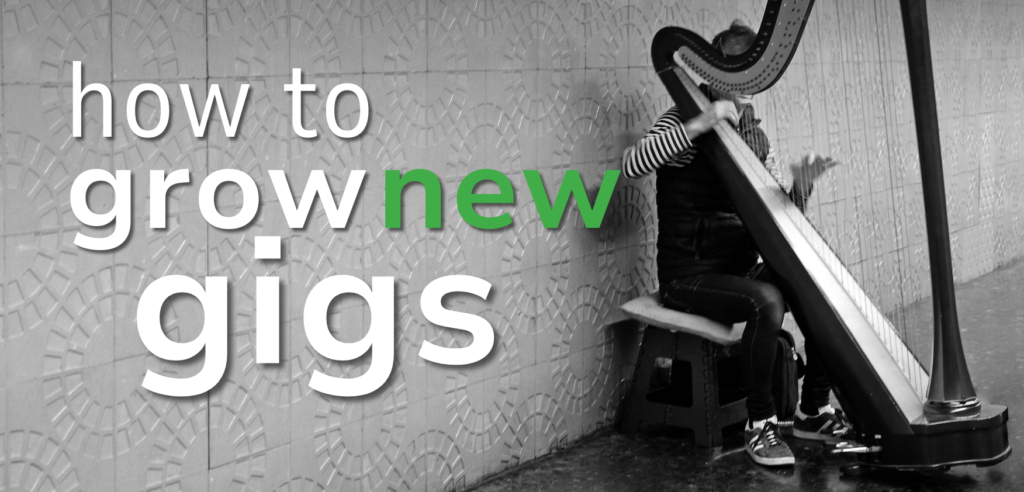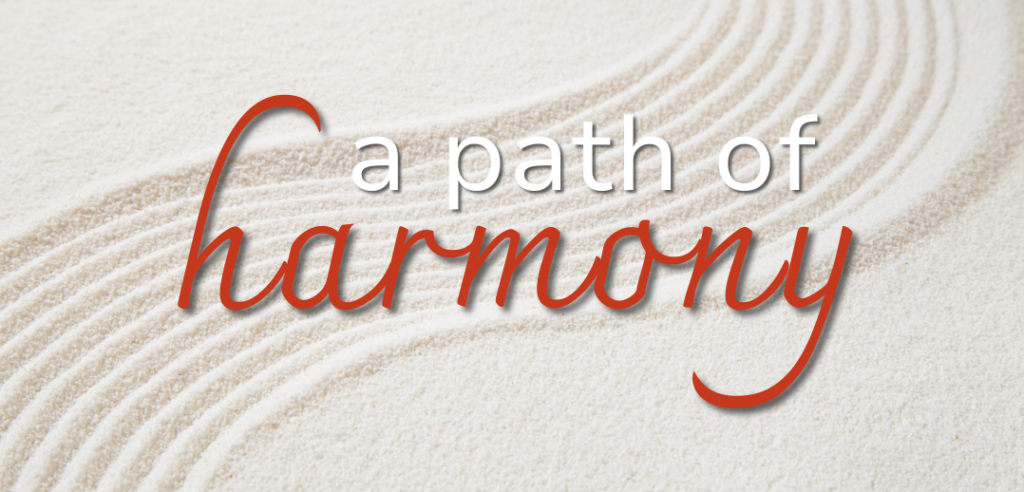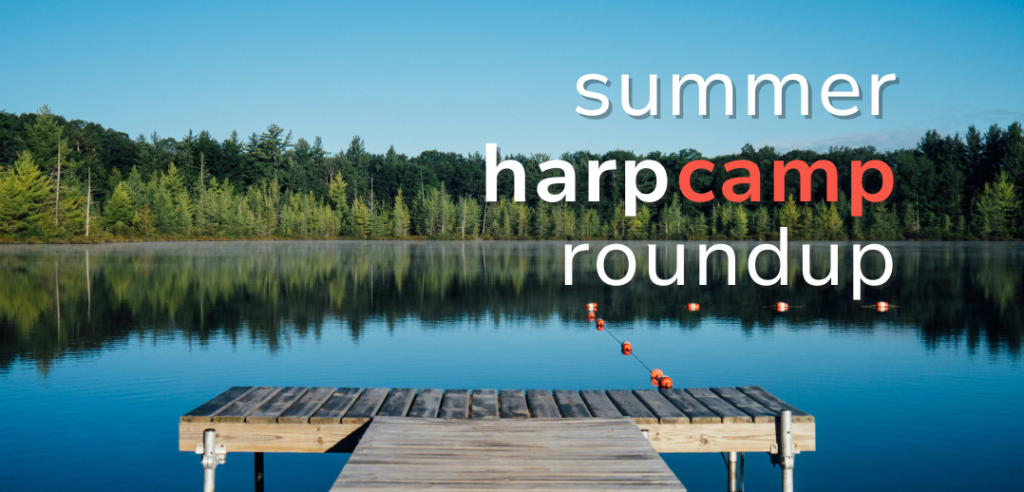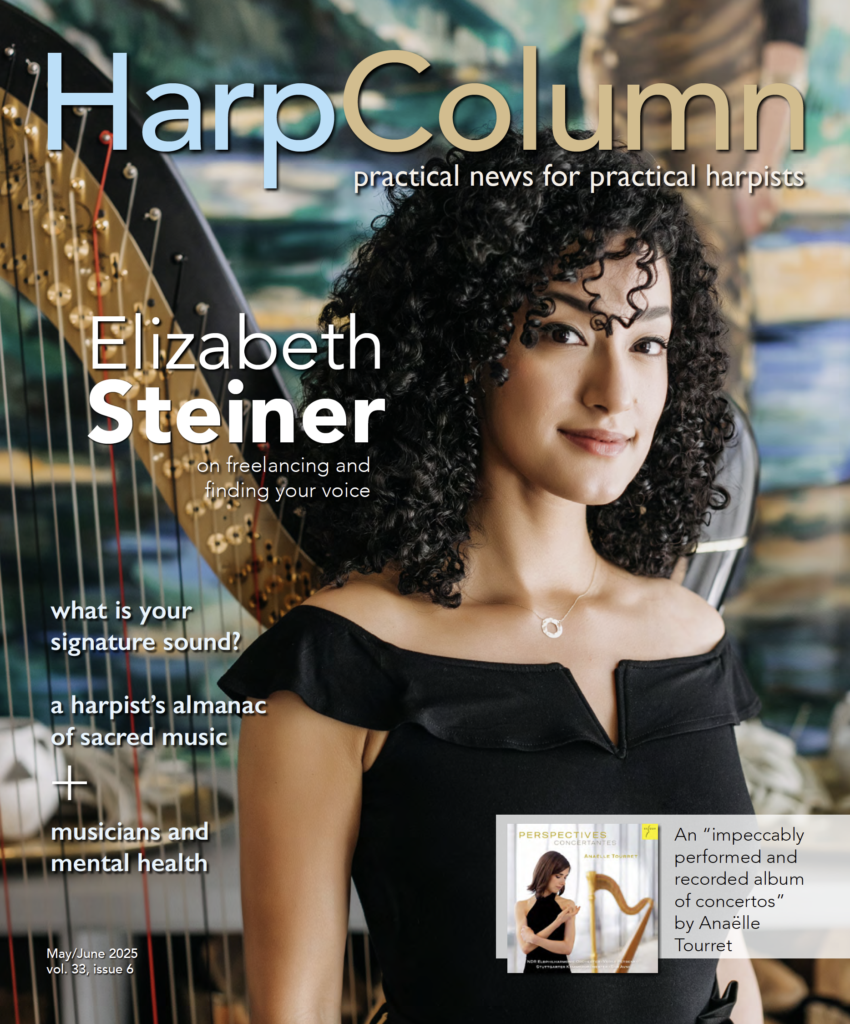I began playing the harp when I was 9 years old. Within a year, I was being invited to share music in Christian worship services. Many harpists of all ages and levels, both lever and pedal, have had a similar experience, being asked to play in a worship service at some point in their lives–whether at their home church or at a local freelance engagement.
Every Lenten season I am invited back to perform at a Lutheran church in the Twin Cities where I live. At services like these, I am typically asked to pick my own music for three or four places in the service, like a solo or more for prelude, one as a meditation after a reading, one during offertory, and one for postlude. Often, we are asked to pick arrangements of hymns or other pieces of beautiful music to coincide with these parts of worship services. But unless you are well-versed in church music and the liturgical calendar, you are probably wondering how to pick appropriate music for the service. That’s why we’ve created this little almanac of sorts—to understand what music works well within a church setting. In this article, we will address music for more traditional Western Protestant and Catholic worship services. For Christian churches whose style of worship includes contemporary praise bands and more modern musical arrangements or instruments, there may be a wider array of music available from which to choose.
The liturgical season
Seasons of the liturgical year
- Advent
- Christmas
- Epiphany
- Lent
- Holy Week
- Easter
- Pentecost
- Ascension
- Ordinary Time
Scroll down for a list of sacred hymns for the liturgical year in alphabetical order
The church year is marked by “seasons” which comprise the “liturgical calendar.” Repertoire and hymns must be carefully chosen in order to coincide with the liturgical calendar, such as special music during Advent, Christmas, or Lent. Some tunes are appropriate only during one season, and others may work year-round. It is important to know which season you are in and what type of service you are playing for when choosing your music. The more carefully we choose our music, the more meaningful it is for the congregation in both tune and text.
See the sidebar for a list of the seasons within the liturgical year for which we might be asked to provide special music, beginning with Advent—the season before Christmas—which starts the church year.
First steps
The first step in planning music is to ask the music director where in the liturgical year the service falls (if you don’t already know), and for the names of other repertoire and hymns they may already have planned for the service. There have been one or two occasions where I was planning a piece of solo music, unknowingly doubling something else that was being sung or played. If you are planning on playing hymn arrangements or improvising on a tune, it is important to know both the tune (hymn) name and common title so you don’t accidentally overlap a tune with the organist or choir. For example, during Christmas you may want to play an arrangement of “What Child Is This” for offering, but the director may already have this planned as one of the major hymns in the service.
How to consult a hymnal
All published hymnals are a wonderful basic resource for planning your music and choosing hymn tunes. Some tunes have more than one set of texts that can be sung with them, and these must be chosen carefully to match the season. Nearly every major hymnal starts with hymns in the Advent season.
For a complete reference of hymns, check out www.hymnary.org. This website is the most comprehensive encyclopedia of hymnals and hymn tunes online, and it is an invaluable resource if you are looking for a specific hymn or text. It has over one million hymn tunes and 6,800 hymnals listed for reference. Lots of the tunes are in the public domain; some are not. For hymns in the public domain, there are also numerous scans of tunes from selected hymnals, some dating back as far as 1640! If you don’t own a hymnal but would like to find the four-part standard arrangement of it, start here in your research.
The site is easy to use. Traditionally, the tune name is in all capital letters. For instance, if you search the tune name THAXTED by Gustav Holst, a host of information pops up which may include: the tune (a sound recording), all the different texts that fit with the tune, where the tune is published in some specified hymnals, the date of the tune, the biography of the composer, and more. You can also search by the common title. Read on to understand the difference between a hymn’s common title and tune name.
If you are asked to play a specific hymn in church, make sure you and the director are on the same page. The names of hymns follow two different formats:
- Common title
- Tune name
The common title is the first few words of the first stanza of the hymn. The tune name is the historic and universal name given to a specific melody. For example, “Be Thou My Vision” is the common title of the hymn tune SLANE. There are other common titles to the tune SLANE, though, like “Lord of All Hopefulness” and “Make Us True Servants.” Sometimes, the common name is the same as the hymn name; for example, “Wondrous Love,” “The First Nowell,” or “Still, Still, Still.” Interestingly, tune names originate from a myriad of places: the composer’s last name, the translation into another language from the common title, the town where the composer worked, or the place where the composer was born, for example.
Often listed under the common title or at the bottom of the page is the tune name and a set of numbers underneath the common title, such as 10.10.10.10, 9.8.9.9, or 8.7.8.7. These numbers refer to the meter, or number of syllables in each phrase of each stanza. There may be numerous sets of texts that can fit to the same tune. This system also makes the hymn tune available to choose for different church seasons based on its poetry, which is why you may see a hymn listed in more than one area of a hymnal. Some hymn tunes are only used and recognized once a year, and an obvious example of this would be “The First Nowell.”
Most hymnals have multiple indexes in the back, and referring to the index is a quick way to survey a hymnal for your specific liturgical season. You can find the meter index (with a list of tune names that fit this meter) and a category or topical index (like opening/closing hymns, comfort, celebration of life, unity, spirituals, communion, healing, etc.). The table of contents in a hymnal lists the common title, whereas the alphabetical tune index will list the universal tune name. Furthermore, some hymnals have more indexes like a composer or a scriptural reference index relating to the hymn text. Here are some examples of common hymn names and the common title:
| Tune Name | Common Title |
|---|---|
| THAXTED | “O God Beyond All Praising” |
| FINLANDIA | “Be Still, My Soul “ |
| HYFRYDOL | “Love Divine, All Loves Excelling” |
| KINGSFOLD | “I Heard the Voice of Jesus Say” |
| NETTLETON | “Come, Thou Fount of Every Blessing” |
Planning and considerations
We are often asked to play for several places in a service. First, try to get a feel for the musical style and denomination of the church and its services. You will know which solo goes where and what type of atmosphere you would like to create. If you are performing at an unfamiliar church, check out YouTube because nowadays lots of churches livestream services on their channel.
There are several ways to describe the type of music you may want to plan. You may want your solo to be slow, beautiful, tonal, or subdued in dynamic. You may want to pick something at a quicker tempo or in a varying meter, and stronger in dynamic. You may want to pick a Renaissance, Baroque, or Classical tune, or one that is written by a beloved composer, like Bach. Your solo may be an arrangement of a hymn, or it may be something you wrote yourself that means a lot to you.
Be sure to pick music of varying keys and textures to make your repertoire unique. Don’t be afraid to make a list of possible repertoire and their allotted places in the service, and then show it to the music director. They may like what you chose, or they may have a suggestion or two. I have confirmed my choices with the director many times, especially if I am playing at an unfamiliar church. I also go through the process of brainstorming what kind of atmosphere I want to create every time I play in church. Sometimes I even scout out the readings and pick a certain piece of music to complement them. These are details that add to the beauty of our music, and to the quality of the service and to our playing.
Get organized
If you play at a church often or at the same time each year, start a list or spreadsheet with the repertoire you programmed so you don’t repeat music too often. I have played for the past several years for the Lutheran church I mentioned earlier, and this year I started to keep track of the repertoire I’ve performed so far. This system will help me plan for next year, and also will help me curate the atmosphere of my playing so it varies year by year. If I’m playing several times within the service, I like to balance my choices with familiar hymn tunes and other original harp repertoire or tunes. If I am only playing a couple of times, I normally pick a hymn tune for the liturgical season and a beautiful harp solo of other music.
Your solos
You can find arrangements to purchase online of your favorite hymns for all levels of lever and pedal harp. Alternatively, you can take the four-part harmony printed version in your hymnal or from hymnary.org and make your own special arrangement for the service. A nice way to simplify the four-part chorale, if needed, is to play only the melody line, along with the left hand. If you’re able, figure out the chords and write them in. Play the melody line and improvise on the harmonies. Experiment with the registers of the harp and add glissandos, harmonics, and dynamics within your phrases. An easy way to try your hand at improvising is to start with Sylvia Woods’ Hymns and Wedding Music for All Harps, which prints both the chords listed above the melody line, as well as simple and more advanced arrangements for each hymn. You can use this as the jumping-off point for improvising. If you do improvise, be sure to practice your improvisations before the service a few times.
Another favorite book of mine is The Sacred Harpist, compiled by Marilyn Marzuki. I love the arrangement of Variations on a Theme by Haydn Op. 56b by Johannes Brahms in this book, and I improvise upon this theme by filling out the harmonies with larger chords or arpeggios. Also in this collection are March Pontifical by Charles Gounod and March Napolitaine by Robert Nicolas Charles Bochsa—both fanfares work well for postludes. Daniel Burton’s music for lever and pedal harp includes many plainsong meditations and accessible arrangements of Celtic and traditional hymn tunes. There are many other wonderful hymn arrangers out there if you don’t choose to make your own.
Favorable secular genres & rep
Music from the Renaissance period is often more modal and works well in a worship service. I love and own three compilation books with music for lever and pedal harp—Ballads and Court Dances of the 16th and 17th Centuries, Renaissance Music for the Harp, and Early Music for the Harp—all by Deborah Friou. I usually find the slower tunes to work better in a service, but if I really like a quicker tune, I simply perform the piece slower than the tempo indicated.
Tried and true worship service companion books I recommend are the Medieval to Modern Repertoire for the Lyon & Healy Troubadour Harp Volumes I and III, collected and edited by Samuel Milligan. For a sprightly prelude, for example, I have performed the Air by Michel Pinolet de Monteclair from volume I. The Rugiler, Glosado de Antonio by Antonio de Cabezon is another nice prelude piece, while Andiam, Mio Tesoro, an anonymous work, could work for postlude. Most of the repertoire from volume III is lovely and you can modify these pieces to fit your needs for length, or by adding arpeggios and repeats. From volume III, the Sine Nomine by Turlough O’Carolan is a lyrical work, and songs like Variations on Highland Laddy by John Parry or Diferencias sobre La Folia are themes and variations that can be parceled out for your needs. The Pastourelle by Joseph Canteloube would work well for a nice reflection in the Renaissance style.
During the Baroque period, most Western European music was commissioned and written for the church. It is for this reason that lots of Baroque music may already work or be written in an appropriate style as sacred musical traditions continue. The Medieval to Modern collections also have works by Handel and Rousseau that work well within services. The works in this book are loosely in chronological order with dates below the composer.
I have known the Petite Suite Classique by Marcel Grandjany nearly all of my performing life and have programmed movements of this in church for over 30 years. Movements in this suite are dances in the Baroque style, of varying keys and speeds, and they are a wonderful resource for mixing and matching anywhere in your church service. Add repeats or codas to vary the length of these movements, or any music for that matter, if you need. Music of J.S. Bach is nearly always a safe choice, such as Prelude in C, Little Prelude in F-Major, Prelude no. 1 or Jesu, Joy of Man’s Desiring. Some of his minuets are nice, too.
Music from the Classical period is normally a safe choice, such as transcriptions of Classical sonata themes. Music of Haydn and Brahms often works well in church. Some of the themes and arrangements in Classical Music for the Harp, also by Friou, are stellar choices. In this book is the “Jupiter” theme from The Planets, by Gustav Holst, which is very well-known because this theme doubles as a hymn tune in most hymnals. Most minuets, sonatina themes, or preludes of C.P.E. Bach or Franz Joseph Haydn work well. Haydn’s Sonatina in G is nice for prelude music. Ludwig van Beethoven’s Ode To Joy is a nice postlude piece, and there is a simple arrangement in this book you can expand upon to fit your needs. The Trout Quintet theme by Franz Schubert, for example, is also a good postlude.
There is some Romantic-era music in this collection that I would not choose for church services, such as Humoresque by Antonin Dvořák or Polovtsian Dance by Alexander Borodin. However, On Wings of Song is a romantic-era piece by Felix Mendelssohn in this collection that is a favorite of mine.
Many pieces in Thirty Little Classics for the Harp, compiled and arranged by Mildred Dilling, are well-suited for worship. Simple, slower pieces from this collection like Minuet in F by Wolfgang Amadeus Mozart, Gavotte Gracieuse by Haydn, or Dance of the Blessed Spirits by C.W. von Gluck are nice invitations to prelude or offertory, while Corrente by G.F. Handel or two Country Dances by Beethoven in this book are more sprightly in nature and are good choices for postlude.
There is so much beautiful Romantic music within the original harp repertoire. Beloved harp composers in my opinion with music in an appropriate style for worship are the intermediate works of Alphonse Hasselmans, Henriette Renié, and Marcel Tournier, for example.
Lifelong favorites of mine are the Trois Petites Pièces Faciles and Feuilles d’Automne collections (each with three pieces) by Hasselmans, or his Petite Berceuse. I recently learned Renié’s Au Bord du Ruisseau and her Feuillets d’Album. Her Six Pièces Brèves work well in worship, as do Marcel Tournier’s Deux Petites Pièces Brèves et Faciles which are lovely and atmospheric. The Trois Petites Pièces Très Faciles by Grandjany are sweet pieces. For a simpler approach, the Ribambelle collection by Bernard Andrès includes ten movements of varying styles, and for a longer length for any of this music, you can figure out repeats to fit your needs. I would recommend learning all of these works in multiple movements as a staple in your repertoire because you can choose one for any occasion and already have them learned.
As for music of non-harpist composers, Robert Schumann’s Träumerei, Little Piece, Humming Song, Petite Etude, or Berceuse Op. 124 No. 6 work well for prelude, after a reading, or for offertory. Daniel Burton has published lovely arrangements of works by Fauré, Bach, and Schumann, and more. Ralph Vaughan-Williams’ setting of the Welsh hymn tune Rhosymedre works well within worship for a variety of settings.
Celtic music, such as in the Irish or Scottish genres, can be a lovely addition within a traditional church service. I find that slow and modal tunes in this style are always winners, and I enjoy improvising on these tunes as part of my solos. Sylvia Woods’ compilation books, 50 Irish Melodies For All Harps and 52 Scottish Songs For All Harps are also staples in my repertoire. I find that I can make almost any song in these collections slower and more meditative to fit my needs. Some favorites in the Irish compilation are Down By the Salley Gardens, The Foggy Dew, and My Wild Irish Rose.
Some of my favorite tunes in the Scottish tunes book are Loch Lomond, Is There For Honest Poverty, Skye Boat Song, Ye Banks And Braes, Kelvin Grove, Hame, Hame, Hame, and The Lea-Rig. However, when choosing Celtic tunes, I would recommend not programming ones that may be well-known in pop culture such as When Irish Eyes Are Smiling, Scotland the Brave, or Danny Boy.
Other favorite Celtic tunes or Celtic flavors that I have played in services are Willow Weeping in the Wind by Laura Zaerr, Give Me Your Hand by Rory Dall O’Cahan, O’Carolan’s Air, and Wicklow. Sweet 40—A Celtic Ballade and Phineas Windsor’s Air are both lovely works by Aaron David Miller. For a solo much more meditative and thoughtful in nature, Miller’s Treehouse in the Woods works beautifully for the Lenten season or for a meditation piece. For years I have performed my own compositions in church such as Consolation, Mimi’s Song, and The Lost Melody.
Unfavorable secular genres & rep
Lots of tunes from the aforementioned genres are safe choices. Some musical genres are not the appropriate style for most traditional Christian denomination services.
Music in a highly programmatic or pop culture genre are not good choices, nor are songs from musicals, or pop tunes—past and present. Music from these genres often evokes memories of T.V. shows, films, or personal experiences that can lead the congregation away from the reflective church atmosphere.
Organist and composer Aaron David Miller served as a consultant on this project. Miller currently serves as Music Director at House of Hope Presbyterian Church in St. Paul, Minnesota. He has been involved in liturgical music for over 30 years for numerous denominations. His works for harp can be found at harpcolumnmusic.com. Visit aarondavidmiller.com for more information.
Steer clear of culturally well-known tunes or themes from opera or ballet as well. Even though they may be beautiful, don’t program waltzes or themes like Oh, My Beloved Father by Giacomo Puccini from Gianni Schicchi, La donna è mobile by Giuseppi Verdi (from the opera Rigoletto), or Musetta’s Waltz by Giacomo Puccini (from La Boheme). Don’t program The Blue Danube by Johann Strauss or Lullaby by Johannes Brahms. Steer away from composers like George Gershwin, Georges Bizet, and Leonard Bernstein. Don’t plan music like Für Elise or Moonlight Sonata by Beethoven, 18th Variation on a theme by Paganini by Sergei Rachmaninoff, or any of the New World Symphony themes by Antonin Dvořák, for example, as pieces like these also have innumerable references to film and pop culture.
Last, avoid music that is well-known within traditional wedding ceremonies like Rondeau by Jean-Joseph Mouret (which is the theme from “Masterpiece Theater”), or Trumpet Voluntary by Jeremiah Clarke. Even though Canon in D by Johann Pachelbel or themes from Antonio Vivaldi’s The Four Seasons and G.F. Handel’s Water Music are very popular within wedding ceremonies, they are not pieces I would program for worship services.
The bottom line: enjoy sharing your music!
It is extraordinarily important that you enjoy planning music that is meaningful to you. Performing in a worship service is a unique opportunity to share music you love. Although you are not playing in a traditional concert setting, you are performing for people who are listening with undivided attention to your music and to your instrument. It is a way to cultivate and add beauty to our communities, and it’s also a wonderful opportunity to share stories and connect with others in a highly meaningful way. Let us joyously take on the calling to connect! •
